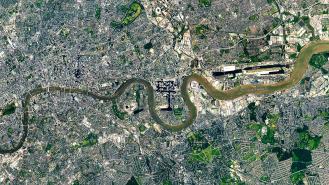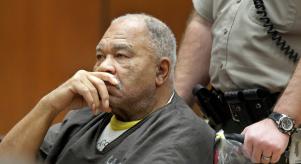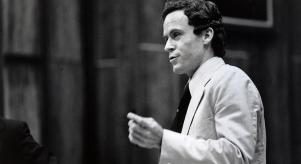
Adam: The torso in the Thames
'Is child sacrifice taking place on British shores?' This was the almost unthinkably grotesque question which detectives had to ask themselves in 2001, thanks to a shocking discovery in the heart of London. Nearly 20 years on, it’s a question that still hasn’t been properly answered.
It was late in the afternoon of 21 September that an IT worker crossing Tower Bridge happened to glance down and see something strange bobbing in the Thames. The onlooker thought it was a barrel at first. It was, in fact, the torso of a young black boy, aged between four and seven. It was dressed in orange shorts, which the murderer (or murderers) had for some reason put on the torso after carefully removing the boy’s limbs with the precision of a master butcher.I
In any normal month, the torso in the Thames would have triggered a media sensation. But, in a world still reeling from the 9/11 attacks, far less public attention was given to the gruesome discovery, even though the police made an effort to humanise the headless victim by giving him a name: Adam.
'Until his family is identified we will act as his family,' one detective said, 'and his community will be the community of London.'
The basic, ugly facts of the murder became clear. The boy’s throat had been cut, and his body drained of blood. But what was the motive, and why had the conspicuous orange shorts – sold in Germany – been carefully put on the torso?
At first, speculation turned to muthi, a form of traditional medicine in southern Africa whose practitioners use trees and plants to concoct cures for ailments like epilepsy and labour pains. Sometimes, animal ingredients such as crocodile fat and dried puff adders are also added. However, there have been documented cases of humans being killed so their flesh can be utilised, raising the grim possibility that the boy in the Thames may have been the victim of one such 'muthi murder'. This possibility was underscored by South African pathologist Dr Hendrick Scholtz, who carried out a post-mortem and suggested the 'the nature of the wounds, clothing and mechanism of death' were consistent with muthi rituals.
This line of thinking even led British detectives to travel to South Africa and seek the help of Nelson Mandela, who filmed a television appeal which was translated into numerous African languages and broadcast across the continent. However, the muthi theory was called into question by some experts, including Dr Richard Hoskins, a senior lecturer in African religions. Consulted by the police, Dr Hoskins noted that the body’s genitals and internal organs were intact, which suggested it wasn’t a muthi killing at all. He believed the southern Africa lead was a red herring, and that the signs pointed to the religious practices of the Yoruba people of western Africa – the basis of voodoo and other religions of the African diaspora in the New World
'In Yoruban religion, the many deities forming a bridge between this world and higher realms require sacrifice,' Dr Hoskins later wrote in his book, The Boy in the River. 'Not necessarily human sacrifice, of course, and especially not nowadays, but the practice persists in some deviant offshoots of Yoruban religion.'
The theory was backed up by forensic mineral analysis of the body’s bones, which suggested the boy had hailed from Nigeria – specifically, the region around Benin City. But, despite this eureka moment, hard leads have proved frustratingly elusive. Indeed, the only really significant figure in the investigation so far is a Nigerian woman named Joyce Osagiede,
Police were alerted to her by social services in Glasgow in 2002, after Joyce had spoken to them of rituals involving children. Intriguingly, given where Adam’s orange shorts came from, Joyce was revealed to have lived in Germany until 2001. She told officers her estranged husband was in a cult known as the Black Coat Eyes of the Devil Guru Maharaj, and that he’d been involved in a string of child murders. Despite this staggering revelation, there was a maddening lack of any hard evidence connecting either Joyce or her estranged husband to Adam’s death.
Deported to Nigeria, Joyce Osagiede was contacted by British journalists years later, in 2011. At this point, she claimed that Adam was really named Ikpomwosa and that she’d brought him from Germany to the UK, where she’d handed him over to a man called Bawa. The trouble was, Joyce had clear mental health difficulties and her account could well have been entirely false. This seemed to be proven in 2013, when Joyce radically changed her story, saying that Adam’s name was actually Patrick Erhabor, and Bawa was actually Kingsley Ojo, a known criminal who’d served a prison sentence in the UK for people smuggling before being deported to Nigeria.
No tangible evidence links Ojo to the Adam case, and since the 2013 interview with Joyce Osagiede, the trail has seemingly run cold. Is any of her story true, or are they the fantasies of a confused mind? Was Adam really killed as part of a religious ritual sacrifice, or was it a more pragmatic muthi murder carried out for the harvesting of his flesh? e
Of course, the racial and cultural aspects of the case add to its sensitivity. In 2005, two furious articles published in The Guardian and The Independent warned of a new moral panic over African culture in the UK. These articles placed the coverage of the Adam case in the wider context of lurid, unsubstantiated stories of occult rituals and child sacrifices carried out by Africans in Britain. Black academic Dr Robert Beckford was quoted as saying that 'some of the coverage reminds of the racist 19th-century anthropological literature… scratch an African and under the skin he is just a superstitious primitive and open to the most terrible kinds of barbarism.'
Debates over the 'Othering' of non-white culture is, of course, more relevant than ever today. But what of Adam himself? Will justice ever be delivered? His short life was extinguished almost two decades ago, and his story remains one of the darkest and most troubling enigmas in modern British history.






